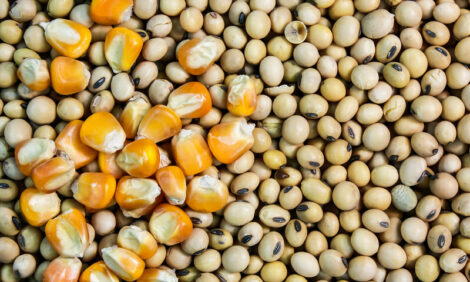



EBLEX Manuals Guide Beef Producers
UK - EBLEX has launched two new manuals to help English beef and lamb producers get the best out of their stock.The beef booklet, called ‘Feeding and finishing cattle for Better Returns’, reminds producers how crucial managing feed is to get the best results from stock.
Compiled by EBLEX, the booklet describes the three distinct phases: rearing, growing and finishing in the feeding management of beef cattle, and how each stage requires different ration specifications and the factors that influence them.
EBLEX beef specialist Mary Vickers said: "Feeding not only determines animal performance but also affects carcase quality. Improving animal performance reduces days to slaughter and cuts production costs.
"The key to this is feed conversion efficiency (FCE) which is achieved by maintaining high dry matter intakes and liveweight gains. Genetic and environmental factors influence FCE – improving the environment, by feeding a well-balanced ration, can be achieved much faster than genetic change and is something all producers can do.
"There are some basic observations that reveal how well a beast is utilising its feed. For instance animals lying down and chewing the cud indicate good feed utilization and dung provides a good indication of how the rumen is functioning and how well an animal is digesting its feed."
The sheep booklet, titled 'Target ewe fertility for Better Returns' guides producers through the many elements that affect the reproductive performance of the flock.
Compiled by Liz Genever and Chris Lloyd, EBLEX, the booklet follows the ewe through from the weaning of one lamb crop to the birth of the next. It looks at how to establish the optimum fertility for a flock as the number of lambs reared obviously influences a farm’s profitability, however more isn’t always the best.
High lambing percentages make sense when there is adequate forage, feed and labour but a lower lambing percentage, which can lead to heavier lambs that are finished more quickly, is ideal where forage is limited.
It also highlights the importance of good record keeping to identify the strengths and weaknesses of an enterprise and show where improvements can be made.
Other topics covered include the factors affecting fertility and health issues at lambing.
According to Liz Genever: "The aim of the booklet is to encourage producers to look at their current production systems in terms of ewe fertility, and set realistic targets for improvement.
"Surveys reveal the national performance of the English flock has remained static for several years, whilst other countries, particularly New Zealand, have gained marked improvements. This highlights the need to look at the challenge of managing fertility."
| TheCattleSite News Desk | Read more EBLEX News here |


